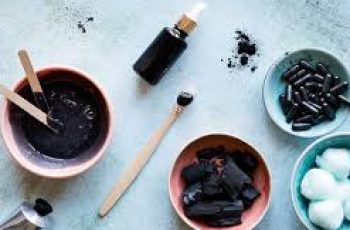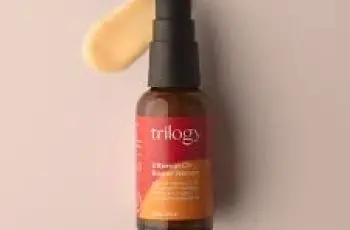
How Does Skin Slugging Work?
Skin slugging is the latest skincare trend on social media. Many of my patients in my dermatology practice in Miami have been asking if skin slugging really works.
Whether skin slugging is good for the skin really depends upon what you are using to slug and what your Baumann Skin Type is. After reading this, you will understand what skin slugging is, whether it’s OK for acne-prone or oily skin, and what products are safe to use when skin slugging. I will even discuss how to skin slug using natural products!
Slugging is actually not a new concept – it’s just a new word for something that dermatologists have used for years. We call it occlusion or occluding the skin. It is often used to speed wound healing. Occlusion means blocking and is used in medicine to describe covering something in a way that prevents evaporation of water and puts a downward pressure against a surface. Saran wraps on the skin to increase penetration of moisturizers or medication, or using Vaseline/Aquaphor are examples of ways you can occlude the skin.
What Is Skin Slugging?
The meaning of skin slug as used on social media is putting Aquaphor or Vaseline on top of skincare products at night. Slugging is not a scientific definition but is more of a trend. Slugging using Vaseline, Aquaphor, or other petroleum-containing ointments is meant to speed and increase penetration of the skincare products that are applied before the Aquaphor or Vaseline. In this case, the word slug means pushing hard as in pushing cosmeceutical ingredients into the skin.
How To Skin Slug
Skin slugging only improves your skin when you are pushing the correct ingredients into your skin. Follow these steps for the best skin slugging results:
Identify your Baumann Skin Type®. You can diagnose your skin type here. Using the wrong slugging technique can cause acne breakouts if you are acne-prone, so take 3 quick minutes to take the quiz before you follow my dermatologist’s recommended tips and advice on skin slugging.
Wash your face using warm water with a cleanser for your skin type that helps increase absorption of the products that follow. Depending upon your Baumann Skin Type, this may be a low pH cleanser, a foaming cleanser, a soothing cleanser, or a nonfoaming cleanser.
Apply the correct skincare treatment product found in step 3 of your PM skincare regimen that we suggest for you after you take our Skin Type Solutions skin type quiz. This PM Step 3 “treatment product” is the product that you’ll want to push into the skin.
Apply a skincare product with occlusive ingredients. On Tik Tok, people suggest Vaseline or Aquaphor but these are petrochemicals, so they are not a great option. We suggest a barrier repair moisturizer instead.
Apply a soothing occlusive oil like Argan Oil
Leave on for at least one hour.
undefined
What Is The Best Skin Care Product To Slug The Skin?
For most skin types, using slugging to push in alpha-hydroxy acids, salicylic acid, and retinoid is not a good idea and can lead to irritation. Because you are increasing penetration of cosmetic ingredients into the skin, this is a good time to use natural or clean products to avoid chemical ingredients such as ethanolamines from getting into deeper layers of the skin and entering the bloodstream. Examples of treatment products you could use are skin lightening products, antiaging products, and soothing products. Our favorite products for skin slugging are Zerafite Barrier Repair Moisturizer and PAORR 100% Organic Moroccan Argan Oil.
[[M03]]
Slugging With Vaseline or Aquaphor
Patients often ask me, “Is Vaseline Or Aquaphor Better For Skin Slugging?” My answer as a dermatologist and someone who cares about the environment is “neither”. Vaseline is made from petrolatum – a petrochemical that comes from crude oil. Yuck! Aquaphor contains petrolatum and mineral oil. Mineral oil is made in the process of refining crude oil. Icky and Gross! I personally would not want to have crude oil by-products all over my face- especially when there are natural, occlusive products with benefits that you can use instead.
Slugging With Natural Oils
Natural oils are great occlusive options to use instead of petrolatum and mineral oil to slug the skin. Put these on top of a barrier repair moisturizer. Choose an organic oil that has the fatty acids that are best for your Baumann Skin Type. For example, if you have dehydration or inflammation on your skin, the best oil to use for skin slugging is Argan Oil because it contains these fatty acids:
Oleic acid- Increases penetration of other ingredients
Linoleic acid- Anti-inflammatory
Palmitic acid- Hydrating
Stearic acid- Hydrating
However, these fatty acids may decrease the effectiveness of skincare products used to treat dark spots. This is why you need to know your Baumann Skin Type before doing a skin slug. The bottom line in choosing a natural product is to choose an oil based on your Baumann Skin Type. Do not choose an essential oil- these do not have fatty acids. Instead, choose an extra virgin or first press organic oil Like PAORR Organic Argan Oil.
Below is a fatty acid chart you can use to find the best natural oils for skin slugging:
Best Products For Skin Slugging By Skin Type
Slugging For Dry Skin
Choose products with stearic acids, such as Argan Oil or Borage oil (see the table above). The best way to hydrate very dry skin is to apply a barrier repair moisturizer followed by an oil, like argan oil.
Slugging For Sensitive Skin
There are 4 types of sensitive skin: acne-prone, rosacea-prone, stinging, and allergic. Which skin products are best to slug skin depends upon the type or types of sensitivities your skin has. If you have sensitive skin, look for an oil with linoleic acid (see the table above).
Slugging For Acne-Prone Skin
Slugging skin is not a great idea if you are on acne medications because most acne medications are very irritating if too much of the acne medication gets in the deep layers of the skin. If you are acne-prone but not on acne medications, here is advice on how to slug your skin without getting pimples. To remain zit free while slugging skin, follow these tips:
Wash skin thoroughly before slugging. If you had on makeup or sunscreen, either double cleanse (wash your face 2 times) or use a makeup remover and then cleanse the skin. You do not want any silicones from SPF or makeup on your skin since they can cause pimples when covered by oils and other occlusive ingredients.
Apply your normal PM skincare routine except for benzoyl peroxide, retinol, or any retinoids.
Make sure you choose a non-comedogenic oil or barrier repair moisturizer if you are planning to slug acne-prone skin. Avoid the comedogenic ingredients found at this link so you don’t cause an acne break-out, and avoid coconut oil since it is comedogenic.
Slugging For Rosacea Prone Skin
Slugging is a nice idea for rosacea-prone skin that is red, flushed, and inflamed. Tips for slugging skin that is red and irritated are:
Wash with a soothing cleanser.
Apply toner with soothing ingredients, such as Coenzyme Q10, which give cells energy. We love the Medature Energizing Q Toner
Use a soothing barrier repair cream like the Zerafite Soothing and Calming Moisturizer
Follow with a soothing antioxidant oil like argan oil
Slugging For Oily Skin
Oily skin types don’t need to slug. The sebum or oil on the skin is already helping push ingredients into the skin. However, if you really want to slug oily skin, here are the tips you need to follow:
Wash with a salicylic acid cleanser to clean pores. If you have makeup or sunscreen on, cleanse the face twice.
Apply the product you want to get into the skin. This will depend upon your Baumann Skin Type. Take the quiz if you don’t know your skin type.
Cover with a hyaluronic acid serum
Cover with a barrier repair cream
Follow with an oil such as Argan.
How Often Should You Slug Your Face?
If you have dry skin, you can slug your face every night. Be sure to use the skincare routine for your Dry Baumann Skin Type after you remove the slugging products. If you have oily skin, we recommend slugging your skin once a week.
Slugging your skin boosts the penetration of skincare ingredients but it is not a replacement for a correct and consistent daily skincare routine. To find the best skincare routine for your skin type, start by taking the quiz. Once you have the recommended products based on your skin’s unique issues, take a close look at step 3 in your PM skincare routine. This is the product you’ll want to slug!
To learn more- Follow us on social media @SkinTypeSolutions or browse our library written by dermatologists.


